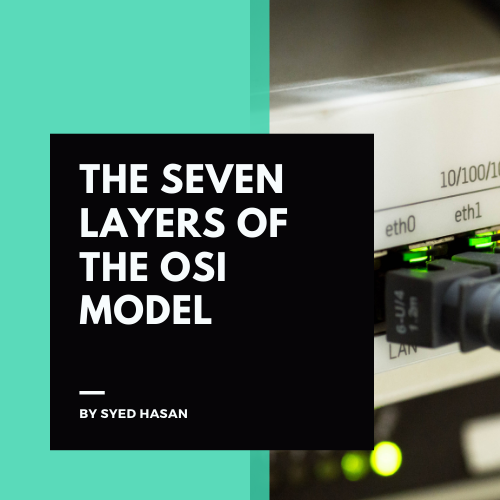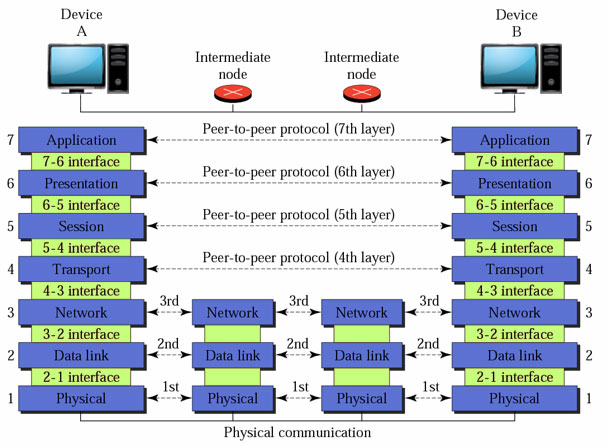A Story of the Two Kings
The Open Systems Interconnection (OSI) model is often considered to be the standard network architecture for implementing network protocols. However, to understand the model and the layers it encompasses, let’s consider an example of The Two Kings.

The King or the Internet User:
In real world, the king wouldn’t be sending a personal message to another king himself. He has representatives to do the work. Similarly, you press a single button on your keyboard. However, behind the scenes, there’s much going on.
The Scribe or Application Layer:
The King sends the message to the Scribe. The scribe allows the King to have a way of writing a message for the second King. Similarly, this layer is called the Application Layer in the OSI model (the first layer among seven).
The application layer allows the users of the network to access resources over the network. These resources include anything from the printer, the file system or a web server which is available across the network.
 The OSI Model
The OSI Model
The Agent or Presentation Layer:
The Scribe is considered a high-ranking officer. The Scribe in turn presents the message to a secret agent (you may call him 007). The agent encrypts, compresses, and translates the message.
This layer, which is responsible for the encryption, compression, and translation of the data accessed over the application layer is called the Presentation layer.
The Lawyer or Session Layer:
The lawyer presents a formal method of communication for the King to contact the second king. He may also manage the communications, set up the meeting, and handle other responsible tasks to keep the meeting running.
This layer, in the OSI model, is called the Session layer. The session layer is responsible for setting up sessions or you may call these connections to the network. As long as you’d like to connect, the session layer manages the session to the destination.
Middle Manager (Lower Management) or the Transport Layer:
The middle manager is responsible for the delivery of the actual message to the other King. However, he relies on various other people (layers) to complete the task.
Similarly, the OSI model’s fourth layer is called the Transport Layer which is responsible for sending the messages (data or packets) to the destination in a reliable or an unreliable nature (more on this, later). The Transport layer is also responsible for dividing chunkier (heavy) packets into smaller data packets called segments and numbers them accordingly.
Mail Room or the Network Layer:
Now, the messages are sent to the mail room by the manager. The mail room is responsible for attaching the second King’s address. This includes everything from the street to the address and the exact location for the delivery person to contact.
In the OSI model, the attachment of information is done by the Network layer. This layer attaches the address labels to the packets that were just received from the Transport Layer.
Envelopes or the Data-link Layer:
Once the message is properly named and the destination is identified, they are put into small envelopes to be sent.
As previously mentioned, a single network as many different types of devices. One could be a printer and another could be a file server. So, the data-link layer properly identifies the medium that we’re going to connect to (say a printer). Next, it puts the packets into small envelopes called frames. These corrected (error correction is done) frames are then sent to the destination.
Fed Ex or the Physical Layer:
Once all is done, the Fed Ex is responsible for actually sending the message to the second King from the first King.
This layer is responsible for sending out electrical signals or actual bits through a physical medium (wire or wireless).
The Receiver’s End:
Once sent to the second King, the data doesn’t just go to the King directly. It follows a similar chain of command. From the Fed Ex delivery to Scribe, it takes a similar approach. The Agent, however, decompresses, decrypts, and translates the data back so the Scribe can send it to the King.
These are the seven logical layers of the OSI model. Each layer makes use of the layer above them to transmit signals or bits and convert them into a meaningful form of message for the user to read. Similarly, the message is passed down to each layer below them for transmission to the destination medium.